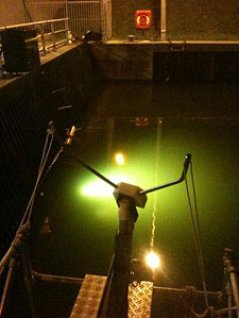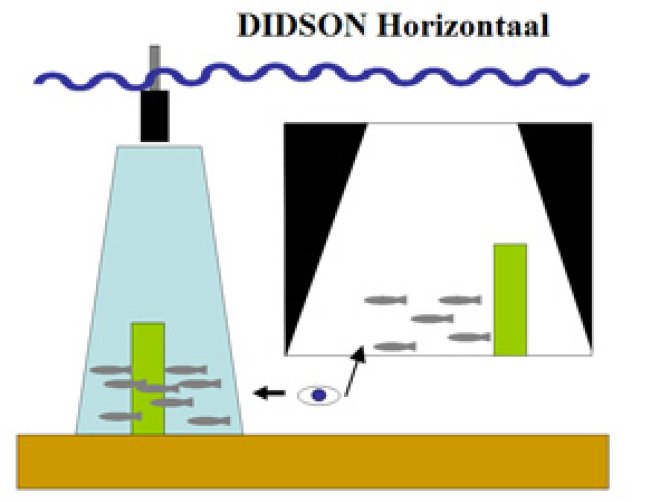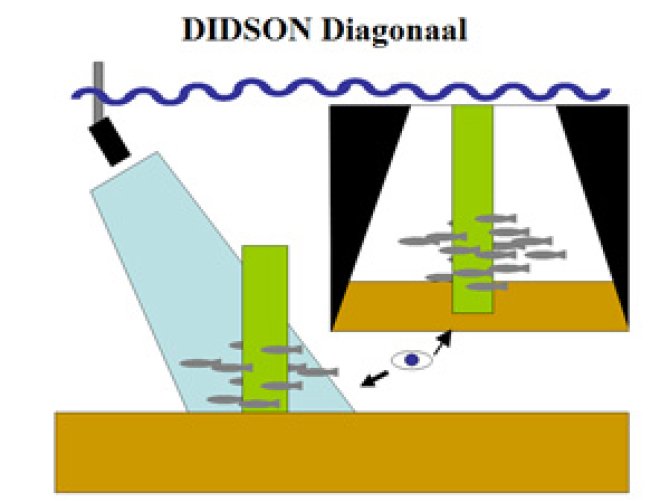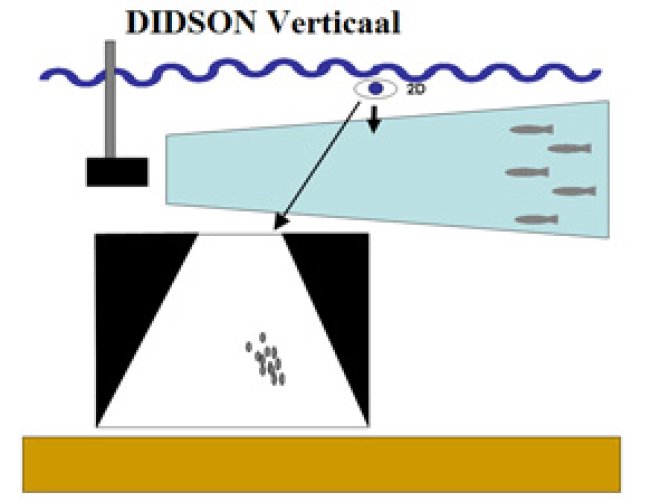
Equipment
DIDSON - Acoustic images
The DIDSON (Dual frequency IDentfication SONar) is a high resolution sonar that uses sound to create acoustic images with much more detail than conventional sonars. This allows the behaviour of fish to be observed on a small scale without disturbing them or affecting their behaviour.
- Unfortunately, your cookie settings do not allow videos to be displayed. - check your settings
Film: Didson, scenes of life around a wind turbine at sea
The DIDSON emits a high frequency sound (1.8 MHz or 1.1 MHz) which creates a 3D image. The higher the frequency, the sharper the image.

The distance (1-30 metres) at which measurements can be made depends on the frequency of the sound transmitted. The sound is converted into a 3D video image. In the videos produced, the length of individual fish can be measured, the position in the water column and the volume of water observed can be determined in order to determine any fish densities. With the DIDSON it is possible to produce images of fish behaviour near, for example, sluices, turbines or fishing nets in turbid water or even at night.
Fish with easily distinguishable features, such as eels, pike, catfish or bream, can be identified. By filming based on sound, this technique is not dependent on visibility in the water or (sun) light and fish can be observed in turbid and dark water.
The DIDSON can be used as a stand alone unit where images are projected into a special diving mask fitted with small screens in the lenses. The unit runs on batteries, but can also be connected to the mains to take pictures over a longer period. The DIDSON is then connected to a computer with a 30 metre cable and can be used to control the range, switching recordings on and off, etc. The images are analysed using a special software. Analysis of the images is done with specially developed software. The DIDSON operates to a depth of 100 metres.
Why the DIDSON and what can be measured?
- Local and individual fish behaviour around objects (engineering structures, pumping stations, WKCs, fish defence systems, fish guidance systems etc.) without disturbing the fish
- Relatively easy method for qualitative and quantitative studies
- Length of fish (cm) and density of fish in the water can be determined
- Species indication at a limited level (based on typical fish behaviour and contours, e.g. eel, pike, catfish, bream etc.)
DIDSON image interpretation
DIDSON image interpretation
The DIDSON can be held in a horizontal or vertical position. The images created by the DIDSON depend on this position. The image produced by the DIDSON is always rotated 90 degrees in relation to the direction that the DIDSON is held.
In a horizontal position the direction of the DIDSON is forward, but an image is created as if the viewer were looking into the water from above. You see the fish from above on their backs.
With a diagonal position the DIDSON is held in the water at an angle. In the images, however, it seems as if the viewer is looking diagonally into the water from the surface.
When the DIDSON is positioned vertically, i.e. facing downwards, images are produced which look straight at the fish or objects. However, the width of the image is narrower than in a diagonal position, which means that fish disappear from the image more quickly.
Images: The direction of the DIDSON and the range (light blue beam). The eye shows the direction that the images should be viewed. The final appearance of the images is shown in the square boxes.


